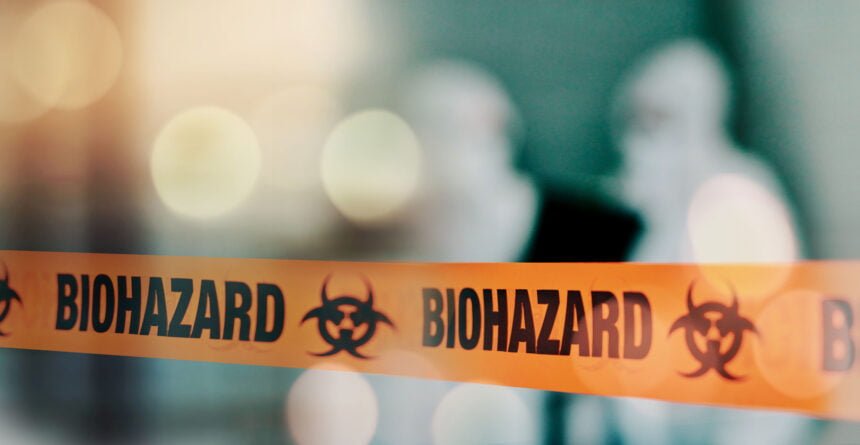Biohazard incidents involve the release or exposure to biological substances—posing a threat to human health, animal health, or the environment. These substances can include bacteria, viruses, fungi, other microorganisms, or their toxins. Biohazard incidents can occur in various settings, including healthcare facilities, research laboratories, agricultural environments, and public spaces.
Dealing with biohazard incidents is no small task. It demands careful planning, rapid action, and thorough follow-up. This guide walks you through the best practices for managing these situations effectively, from preparation to response to post-incident procedures.
Preparation and Training
Your emergency response plan (ERP) should be detailed and tailored to the biohazard scenarios you might face. Everyone on your team should know their role inside and out. Regular training is key. Hold sessions that cover biohazard handling and proper use of Personal Protective Equipment (PPE).
Mock drills are also invaluable to help your team stay sharp and ready. During these drills, simulate various biohazard scenarios to test your team’s ability to respond effectively and identify any weaknesses in your plan.
Keep your supplies well-stocked, too. This includes gloves, masks, goggles, protective suits, spill kits, containment tools, and disinfectants. Being prepared means having the right tools on hand. Regularly inspect your equipment to ensure everything is functioning properly and replace any expired or damaged items.
In addition to your internal preparations, consider partnering with a professional such as Bio Recovery Cleanup Service. These experts can provide advanced training and support for your team, ensuring that you are updated with the latest techniques and protocols. Their specialized knowledge and experience can be an invaluable asset, particularly in complex or high-risk scenarios.
Response to Biohazard Incidents
When a biohazard incident occurs, quick and decisive action is crucial. Determine the type and extent of the biohazard. This assessment should be thorough and systematic, identifying the source of the biohazard, the potential for exposure, and the immediate risks to health and safety.
Isolate the area immediately to prevent further contamination. Use physical barriers, such as caution tape or temporary fencing, to secure the area and restrict access. Moreover, communication is critical—notify the relevant authorities and emergency response teams right away and ensure everyone involved knows what’s happening. Clear and concise communication prevents confusion and ensures a coordinated response.
Equip your responders with the appropriate personal protective equipment (PPE) before they enter the affected area, and check that this gear is in good condition. Contain the biohazard using barriers, absorbent materials, and spill containment systems. If necessary, seal off ventilation systems to stop airborne contaminants from spreading.
Follow established protocols for decontamination, cleaning, and disinfecting the area. Use approved disinfectants and cleaning methods to ensure that all biohazardous materials are effectively neutralized. Dispose of any contaminated materials in biohazard waste containers. Proper disposal is crucial to prevent secondary contamination and comply with legal requirements.
Post-Incident Procedures
Once the immediate danger is under control, there’s still work to be done. For waste disposal, transport biohazard waste to approved facilities according to local and federal regulations. Document every step to ensure compliance and accountability. Accurate documentation can also be useful for insurance claims and regulatory audits.
Health monitoring is also essential. Monitor responders and anyone potentially exposed, looking for signs of illness and providing medical evaluations and treatments as needed. Early detection of symptoms can prevent the spread of disease and ensure that affected individuals receive prompt medical attention.
Complete detailed incident reporting, covering the causes, response actions, and outcomes. Use these reports to refine your ERP based on lessons learned. Regularly review and update your ERP to incorporate new information and improve your preparedness.
Don’t forget psychological support. Offer psychological counseling and support services to anyone affected, addressing the psychological impact of the incident. Biohazard incidents can be traumatic, and providing mental health support helps individuals cope with the stress and anxiety they may experience.
Continuous Improvement
Gather feedback from all team members and stakeholders involved in the response to understand what worked well and what could be improved. Enhance your training programs based on this feedback and the latest developments in biohazard management.
Community engagement is also important. Educate the community on biohazard risks and emergency procedures and build strong relationships with local authorities and organizations for a coordinated response. Public awareness can enhance community resilience and support during biohazard incidents.
Create a Standard Operating Procedure
Standard operating procedures (SOP) for managing biohazard incidents should ensure the safety of personnel and the environment. It should start with an introduction outlining the purpose, scope, and definitions, followed by assigning roles and responsibilities. The SOP must include risk assessment procedures, immediate actions during an incident, and containment measures.
Decontamination procedures should detail methods for cleaning surfaces, equipment, and personnel, as well as protocols for safely removing contaminated PPE. Waste management practices should cover segregation, handling, storage, and disposal of biohazardous waste, ensuring adherence to labeling and packaging standards.
The SOP should also outline medical surveillance protocols for exposed personnel, including health monitoring, vaccination recommendations, and post-exposure follow-ups. Communication and reporting procedures are essential for both internal and external stakeholders, with specific guidelines for documentation and record-keeping.
Regular training and emergency drills should be mandated to prepare personnel for potential incidents. The SOP should incorporate a review and improvement process based on lessons learned and include references to relevant laws and regulations, along with useful appendices such as incident report forms and decontamination checklists.
Conclusion
Effectively responding to biohazard incidents requires thorough preparation, swift and organized action, and comprehensive post-incident procedures. By following these best practices and continuously improving your strategies, you can ensure the safety of your team and the public while minimizing the impact of biohazard incidents. Together, we can handle these challenging situations with confidence and resilience.









